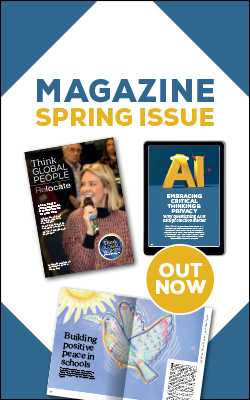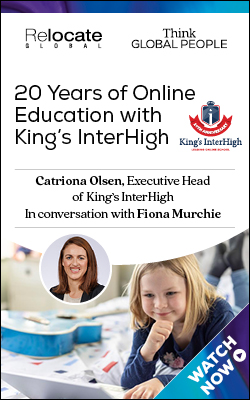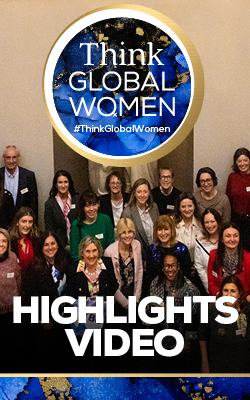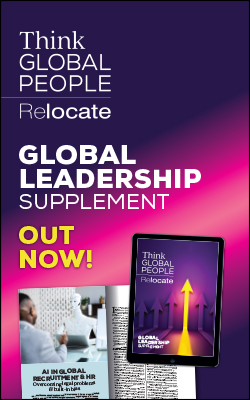Global mobility professionals: Looking to the future by learning from HR’s past
The last 20 years have seen great changes in the roles performed by global mobility professionals. The function has gained expertise and its profile has been raised significantly. Yet those working in this field still strive for a more strategic role. In the first of a three-part analysis, Dr Sue Shortland draws parallels with the development of the HR function to provide learning points for global mobility for the years ahead.

This article is taken from the Autumn 2024 issue of
Think Global People magazine
Click on the cover to access the digital edition.The global mobility function has become a key stakeholder in conversations around business growth as organisations have sought to increase their global presence. The need to move talent around the world to fill skills gaps, train local people and develop future international leadership capability is paramount.The global mobility function began its journey by managing personnel on the move. It specialised in the provision of relocation services, developing appropriate policies to support mobile individuals and their families. The role has widened considerably over the years. Today, it encompasses far more in the way of specialist advice, compliance planning and implementation. However, global mobility professionals seek a wider and more strategic role going forward. We can learn lessons on how to achieve this by looking at the HR function’s development.
Learning from the HR journey: implications for global mobility
A number of parallels can be drawn between the position of personnel management (PM) in the early 1990s and its transition to the strategic human resource management (SHRM) function we see today.An early model proposed by the academic John Storey in the 1990s classified four roles of HR managers by drawing on two key dimensions: strategic versus tactical actions; and interventionary versus non-interventionary actions. Using this framework, Storey suggested that HR held four key roles:- Handmaiden: HR was attendant to line managers; its actions were non-interventionary and tactical
- Regulator: HR formulated and enforced policy and procedure; this role was interventionary and tactical
- Adviser: HR acted as an internal consultant; the role was non-interventionary, but strategic
- Change-maker: a strategic and interventionary role, with a focus on performance and commitment.
Managing relocation in practice
The ‘handmaiden’ role is in evidence when global mobility acts in response to line managers’ requests. It is represented by the presentation of candidates for mobility where the role of the global mobility professional is to manage the moves they are given. Typically this is a reactive approach, delivering service functions and applying reward policy to individual cases.Nonetheless, its value should not be underestimated. Moves must go ahead effectively. The role includes activities such as sourcing and supplying accommodation, home and school search services, the application of appropriate benefits packages and implementing training provisions. In essence, this has been the bread-and-butter work of global mobility professionals for many years.Read related articles
- The future of the global mobility function: Learning from HR’s evolution
- Transforming the global mobility function
Regulatory demands: compliance activities
A huge area of growth that has taken effect (particularly since Covid) concerns the ‘regulator’ role as applied to global mobility. Ensuring that policy and procedure are enacted appropriately –particularly in relation to compliance – has become of significant importance and value to organisations.The range of assignment types in play, alongside requests for remote and hybrid working, have resulted in complexity, particularly in ensuring that immigration and tax aspects are understood and applied correctly. In addition, compliance requirements embrace aspects such as social security, pensions and employment law.The penalties associated with failure to perform this regulatory role correctly are becoming increasingly severe. As a result, global mobility professionals are being called on to deliver a regulatory role beyond the standard types of international assignments and become involved in business travel. This has widened the function’s remit significantly.While the global mobility function may not necessarily see this as being their desired goal, it is important to recognise that, despite its tactical nature, the work is interventionary and is highly regarded within organisations. This suggests that, looking ahead, this area of expertise is likely to become valued to an even greater extent and will place global mobility professionals at the heart of business expansion in a highly proactive role.Advisory services
This leads into considering the role of global mobility professionals as ‘advisers’. The expertise the function has built up over the decades in terms of understanding different country cultures, legislative regimes, the problems that can arise at every juncture of the global mobility life cycle and having the expertise to solve them leads to the function holding a highly valued internal consultancy role.With global mobility professionals extremely keen to take a more strategic approach, this advisory role provides a baseline from which to rise to this goal. Although the nature of an advisory role is non-interventionary – advice is given, but someone else undertakes the action – it is strategic in nature.This strength should be recognised by global mobility professionals and built on going forward. With their deep knowledge and understanding of the international arena in respect of people management, the step from providing advice to enacting it becomes a clear possibility.Talent identification and planning: the desired strategic goal
Various surveys over the past years have indicated that global mobility professionals do not feel they are where they want to be. They recognise the operational nature of what they do, but they want to move to a more strategic approach.In terms of strategic input, surveys appear to suggest that global mobility professionals want to be involved to a greater extent in the identification of talent who are to be moved globally. They want an input into the choice of who is moved such that they can use their knowledge of relocation suitability and international – as opposed to job-related – competencies to best effect, not simply be on the receiving end of talent identified by others. Yet, this is a tricky issue for the function.In order to be part of the talent identification and planning process, those involved need to have clear and detailed understanding of the capabilities of the people who could potentially form part of a global talent pool.Traditionally, global mobility has not performed this role. Those who know the capabilities of individuals tend to be the line managers for whom these people work. As such, talent identification tends to fall within the remit of the home and host line management, potentially with some HR input as part of the performance management process. The question arises as to how global mobility professionals can break into this closed circuit.The change-maker
The focus of the ‘change-maker’ is on performance and commitment. Global mobility professionals can play a role here through involvement in global talent planning inventories. This is where individuals can register their interest in undertaking an international assignment via a database kept up to date by the function.Interested individuals can record their potential availability, family circumstances and their ability to undertake an assignment, and when they need periods in their home location for personal reasons. Contact with potential candidates for talent mobility opportunities can involve international competency discussions that go beyond job role and performance.In this way, global mobility professionals can input complementary aspects that are highly relevant to the selection process, including international experience and capabilities as well as family needs and backgrounds, that play such a large part in assignment success. A proactive approach, potentially working with the HR function and its performance management activities, can ensure that line managers in both the home and host countries are aware of employee and family circumstances, willingness to undertake global mobility and relevant international capabilities. This is clearly both an interventionary activity and one that adds strategic value in terms of advocating suitability for international relocation.Global mobility professionals recognise that their dealings with individuals and families must pre-date the selection decision being taken. Playing an active part in the career path process through dialogue with employees and appropriate recording mechanisms that encourage candidates to express their interest in international mobility can have a valuable strategic outcome.Global mobility can also be proactive by encouraging employees and families to consider mobility and widening the talent pool by running awareness sessions and appropriate preparatory training ahead of assignment applications and selection. For example, this might involve using repatriated colleagues in informal dialogue with potential international mobile talent. This interventionary approach will have a strategic outcome in terms of the talent identification process.Looking ahead
By applying lessons from personnel management’s journey into its current strategic HR function, we can see that global mobility is well-positioned to become more strategic in its activities. The expertise is already in place and the value placed on its advice and regulatory actions, as well as its day-to-day administrative role, is high. The next step is to become an active change-maker.Looking to the future, if global mobility professionals are serious about wishing to have greater strategic involvement in international mobility, then they must focus on interventionary actions with strategic outcomes alongside the day-to-day tactical and non-interventionary activities that form the bulk of their work. The extra step should not be seen as a major hurdle. The function already has a solid bedrock in place to underpin strategic change-maker activities. The future is clear: global mobility must take the extra step and have a more strategic input into the talent identification and planning process.
Find out more about the Think Global People and Think Women community and events.

Subscribe to Relocate Extra, our monthly newsletter, to get all the latest international assignments and global mobility news.Relocate’s new Global Mobility Toolkit provides free information, practical advice and support for HR, global mobility managers and global teams operating overseas.
©2025 Re:locate magazine, published by Profile Locations, Spray Hill, Hastings Road, Lamberhurst, Kent TN3 8JB. All rights reserved. This publication (or any part thereof) may not be reproduced in any form without the prior written permission of Profile Locations. Profile Locations accepts no liability for the accuracy of the contents or any opinions expressed herein.





































